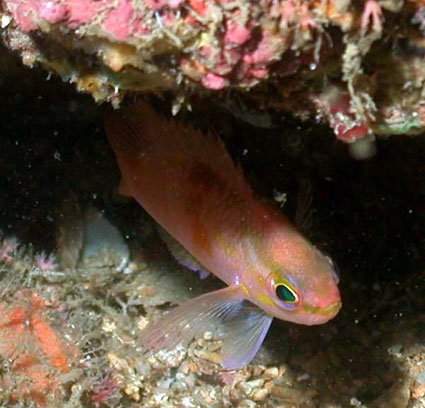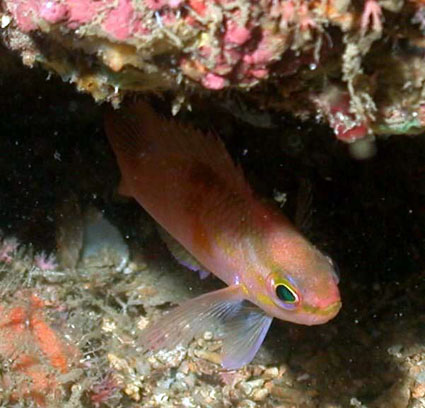As corals are particularly susceptible to oil detergents and dispersed oil, the results of these assays rules out the use of any oil dispersant in coral reefs and in their vicinity.
–From a 2007 paper by Israeli researchers, published in The Journal of Environmental Science
 (USGS photo)After reading those words a few days ago, I became concerned about the deep-water reefs of the northern Gulf of Mexico, known as the Pinnacles. They lie just 25 miles north of the Deepwater Horizon leak, at depths of 230 to 400 feet along the edge of the continental shelf running from the Mississippi Delta to the DeSoto Canyon. The National Oceanic and Atmospheric Administration (NOAA) describes them as a broad band of “drowned reefs” or “fossil reefs,” but while the reefs may be “fossil” — formed several millennia ago, when sea levels were lower — they remain ecologically vital. Says NOAA:
(USGS photo)After reading those words a few days ago, I became concerned about the deep-water reefs of the northern Gulf of Mexico, known as the Pinnacles. They lie just 25 miles north of the Deepwater Horizon leak, at depths of 230 to 400 feet along the edge of the continental shelf running from the Mississippi Delta to the DeSoto Canyon. The National Oceanic and Atmospheric Administration (NOAA) describes them as a broad band of “drowned reefs” or “fossil reefs,” but while the reefs may be “fossil” — formed several millennia ago, when sea levels were lower — they remain ecologically vital. Says NOAA:
The Pinnacles are part of a shelf-edge reef complex throughout the Gulf of Mexico and southeastern United States that is considered to be critical spawning habitat for many commercially important species of groupers and snappers, and are home to many species that do not occur on shallow coral reefs such as the Spanish flag and roughtongue bass.
Well, vast plumes of dispersed oil are now hovering over these cradles of biodiversity. Associated Press reports that the dispersed oil is now over the western edge of the Pinnacles.
The reefs face two threats from the oil plumes. The first is oxygen depletion. “These plumes are being eaten by microbes thousands of feet deep, which removes oxygen from the water,” AP reports. The article quotes Samantha Joye, a professor of marine sciences at the University of Georgia who says that the abundant deepwater coral in this area “need oxygen. Without it, they can’t survive.”
The second threat is poisoning from direct contact:
Oil mixed with the chemical agent can disperse into the water more easily, rather than it staying on the surface, where it could bypass deeper banks like Pinnacles, said Edward Van Vleet, a chemical oceanography professor at the University of South Florida.The downside is that it causes oil to sink, coating corals and other reef organisms and smothering them, he said. When the dispersed oil is broken into smaller globules, he said they are more easily eaten by smaller reef organisms and can kill them or cause tumors or something else harmful.
And the Pinnacles aren’t the only reefs threatened by the underwater plumes. The Gulf loop current could carry them to the shallow-water corals off of the Florida Keys, AP reports.
The situation starkly illustrates the brutal dilemma faced by cleanup crews as they fight to limit damage from the ongoing spill. Use of chemical dispersants is no doubt reducing the size of surface slicks, limiting the potential for catastrophic damage along the Gulf’s environmentally sensitive shores. But dispersants also add to the size of underwater plumes, expanding the potential for catastrophic damage along the Gulf’s environmentally sensitive sea bottom.
The situation doesn’t clarify much about the wisdom of using dispersants. But it highlights the tremendous risks of deep-water oil drilling. And until we learn to use significantly less oil, deep-water drilling will only become a more entrenched practice.


